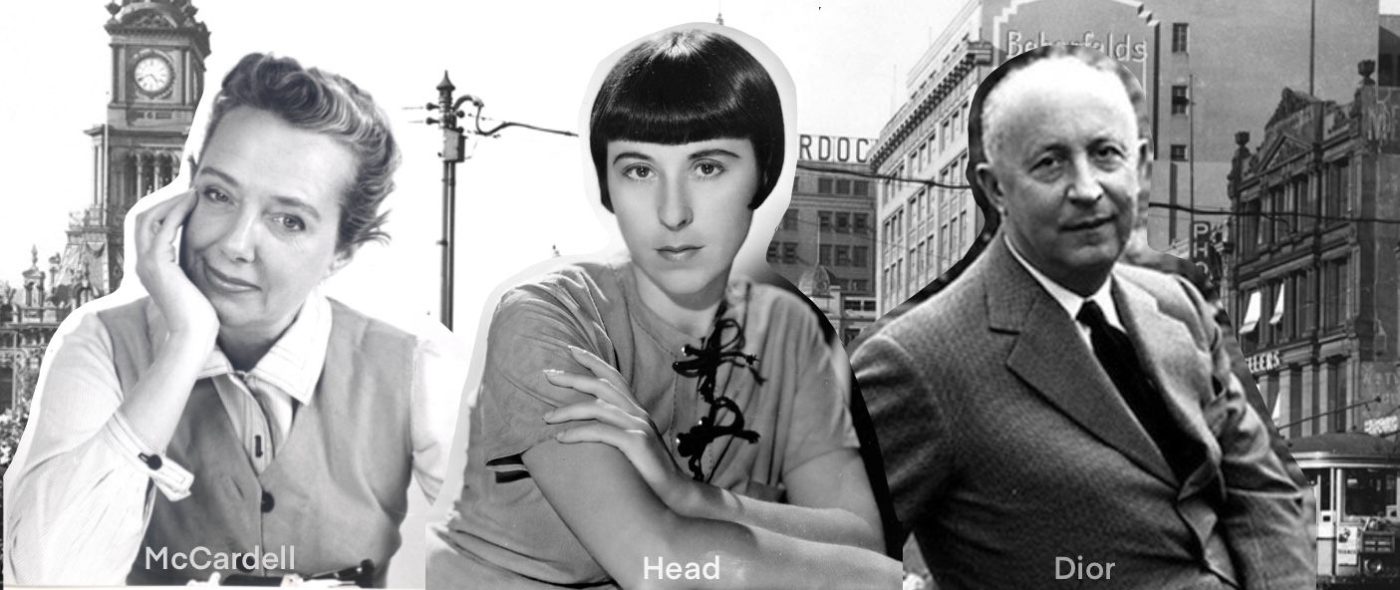The 1940s were a transformative decade in fashion, heavily influenced by the socio-political upheavals of World War II and the subsequent post-war era. The period saw a blend of austerity and glamour, practicality, and innovation. In this post we explore the key influences, trends, garments, and figures that shaped the fashion landscape of the 1940s.
Influences on 1940s Fashion

World War II (1939-1945)
The most significant influence on 1940s fashion was World War II. The war brought about rationing of materials, which directly impacted clothing production. Fabric shortages led to the introduction of regulations such as the United States’ L-85 restrictions, which limited the amount of fabric used in garments. This resulted in more streamlined and utilitarian designs.
Utility Clothing: Governments promoted utility clothing that was durable, practical, and required less fabric. Women’s skirts were shorter, and garments featured fewer pleats and trimmings. The British Utility Scheme, for example, ensured that clothing met specific standards of durability and practicality.
Make Do and Mend: With materials scarce, the ethos of “Make Do and Mend” became prevalent. People were encouraged to repair and repurpose their existing clothes, leading to a culture of creativity and resourcefulness in fashion.
Post-War Recovery

After the war, there was a marked shift in fashion as economies recovered and fabric became more available. People sought to celebrate and indulge in more luxurious and glamorous styles, leading to the emergence of new trends.
Return to Femininity: The end of the war brought a return to more feminine and elaborate styles. Christian Dior’s “New Look” in 1947 epitomized this shift with its cinched waists, full skirts, and an emphasis on an hourglass silhouette.
Key Trends and Garments

The Utility Suit (aka. Victory Suit)
One of the most iconic garments of the early 1940s was the utility suit, also known as the “siren suit.” It was known as the Utility Suit in Britain and the Victory Suit in the United States. This all-in-one outfit was designed for practicality, often worn by women who worked in factories or other wartime industries. It was typically made from durable fabric and featured functional details like multiple pockets. … Read more
The Swing Coat
As the war ended, the swing coat became popular. This coat had a wide, flaring silhouette that contrasted with the more fitted styles of the war years. It represented a return to luxury and opulence in fashion.
The New Look
Christian Dior’s “New Look” in 1947 was revolutionary. Characterized by rounded shoulders, a cinched waist, and a full skirt, this style marked a significant departure from the austere wartime fashions. It symbolized a renewed interest in femininity and extravagance.
Key Figures

Christian Dior
Christian Dior was perhaps the most influential designer of the late 1940s. His “New Look” collection redefined women’s fashion and brought Paris back to the forefront of the fashion world after the war. Dior’s designs emphasized luxury, femininity, and a return to traditional gender norms in fashion.
Claire McCardell
An American designer, Claire McCardell, was instrumental in popularizing American sportswear. She introduced practical, comfortable, and stylish clothing that catered to the modern woman’s lifestyle. Her designs, such as the “Popover” dress, were versatile and functional, aligning with the wartime ethos of practicality while still being fashionable.
Edith Head
Edith Head was a prominent Hollywood costume designer whose work influenced mainstream fashion. She designed costumes for many leading actresses, and her ability to blend style with the practical needs of film helped set fashion trends that extended beyond the silver screen.
Conclusion
The 1940s were a decade of significant change and adaptation in the fashion world. The war influenced a move towards practicality and resourcefulness, while the post-war period saw a resurgence of luxury and femininity. Key garments like the utility suit and the New Look dress, along with influential figures such as Christian Dior and Claire McCardell, played pivotal roles in shaping the fashion trends of the era. The 1940s remain a fascinating period in fashion history, reflecting the resilience and creativity of people during challenging times.


Pingback: The 1940s Victory Suit: A Symbol of Style, Sacrifice, and Resilience - Moekel
Pingback: The Technological Revolution of the 1940s: Inventions, Impact on Life, and Influence on Fashion - Moekel